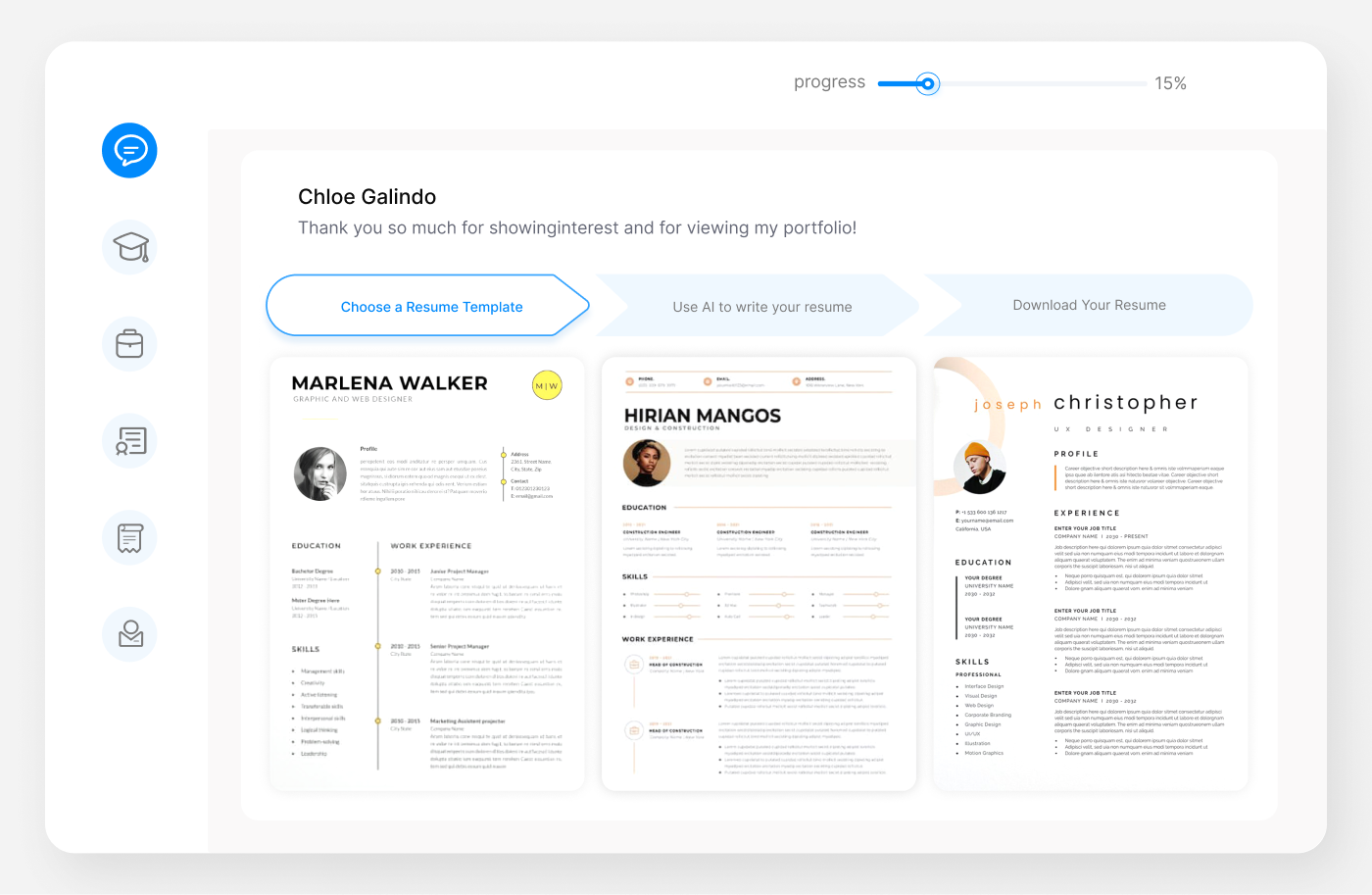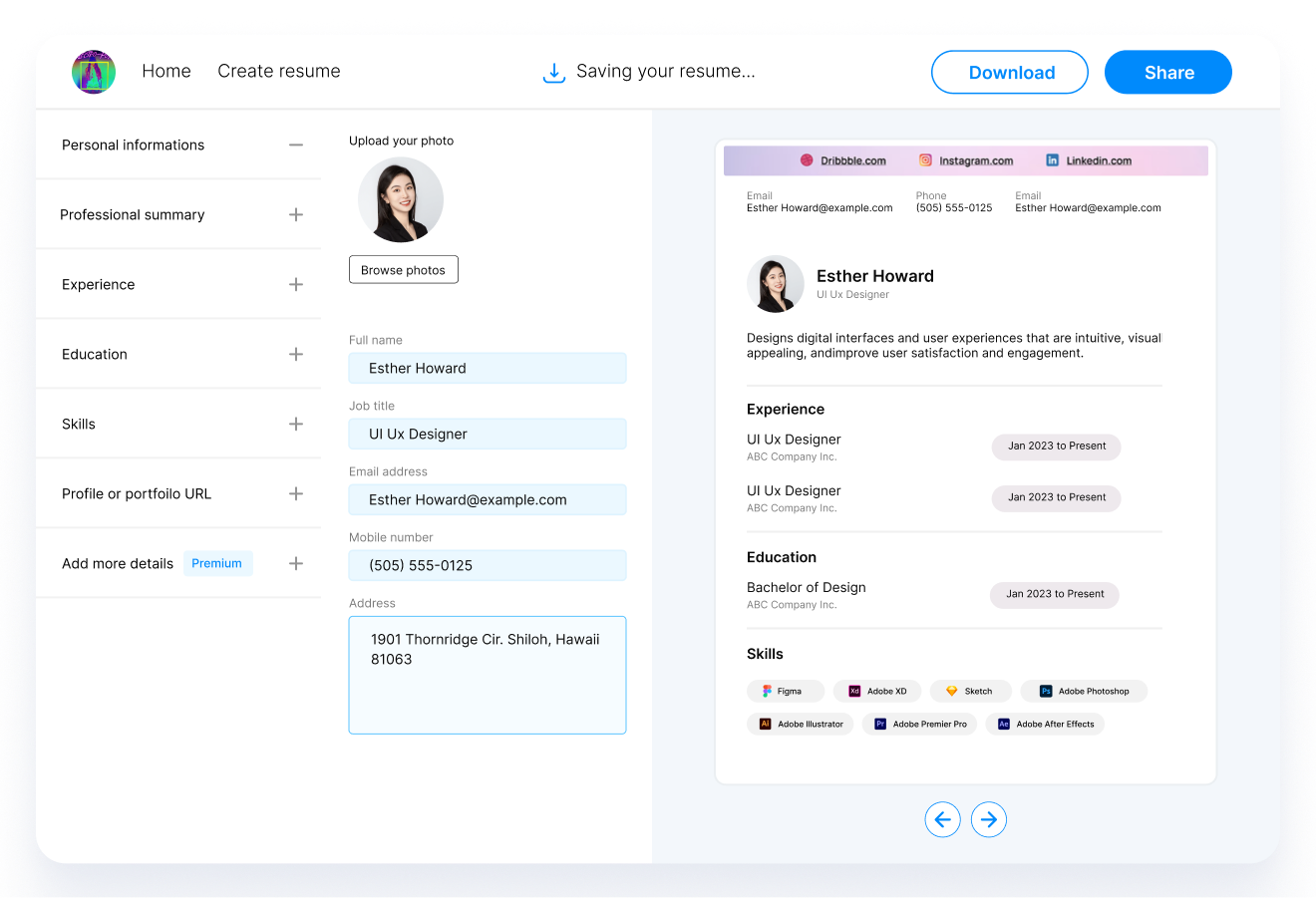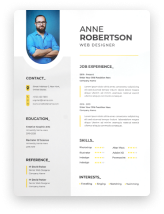In this article, we're going to guide you through perfecting the cover letter for your next job application as a Biomedical Engineer. This quick guide will provide you with valuable insights, specific examples, and actionable advice to enhance your chances of landing your dream role in the engineering and scientific sector. From structure to content, we cover every aspect to help you create a standout cover letter.

Crafting the Ideal Biomedical Engineer Cover Letter
Johnathan Smith
123 Biotech Lane
Innovate City
ScienceState
54321 (123) 456-7890
johnathan.smith@email.com
August 15, 2023
Dr. Emily Roberts
Head of Recruitment
GenTech Solutions
456 Medical Avenue
TechTown
HealthState
98765
Dear Dr. Roberts,
I am writing to express my interest in the Biomedical Engineer position advertised on your company website. With a strong background in biomedical engineering and a passion for innovative healthcare solutions, I believe I can significantly contribute to GenTech Solutions' commitment to developing cutting-edge medical technologies.
In my current role at BioMedTech, I played a pivotal part in developing a groundbreaking cardiac monitoring device, which resulted in a 30% improvement in patient monitoring accuracy. This experience honed my skills in medical device design and cross-functional collaboration, making me well-prepared for the challenges at GenTech Solutions.
I am particularly excited about GenTech's recent foray into AI-driven diagnostic tools, a field I have closely followed and contributed to through my academic research at the University of Health Sciences. My thesis, which explored the integration of artificial intelligence in early cancer detection, has been recognized at the International Biomedical Conference 2022.
I am eager to bring my technical expertise and innovative thinking to your esteemed team and contribute to your mission of revolutionizing healthcare technology. Thank you for considering my application. I look forward to the possibility of discussing my application in more detail.
Warm regards,
Johnathan Smith
Leading Into the Art of Writing a Biomedical Engineer Cover Letter
Before diving into the specifics of crafting a compelling cover letter, it's essential to understand the unique aspects of a Biomedical Engineer's role and how to effectively communicate your skills and experiences to potential employers.
Formatting the Header and Contact Information
The header of your cover letter is more than just a formality; it's your first impression. Ensure it's structured professionally and contains all the necessary contact details.
Creating an Impactful Header
-
Full Name: Your name should be prominently displayed at the top of the document.
-
Professional Title: Clearly state your professional title, in this case, 'Biomedical Engineer'.
-
Contact Information: Include a professional email address and a reliable contact number.
-
Physical Address: While not always necessary, including your city and country can be helpful, especially for local positions.
-
LinkedIn Profile (Optional): If you have a LinkedIn profile with further details about your professional journey, include it.
Correct Header Example:
Johnathan Smith
Biomedical Engineer
123 Biotech Lane
Innovate City
ScienceState
54321
(123) 456-7890
johnathan.smith@email.com
Addressing the Hiring Manager: The Right Way
When beginning your cover letter, addressing the hiring manager directly can set a positive tone for your application. It shows that you've taken the time to personalize your letter and are genuinely interested in the position.
Finding the Right Contact
Conduct some research to find the name of the hiring manager or the head of the department you're applying to. Use resources like the company website, LinkedIn, or even a phone call to the company to gather this information.
Example Addressing Hiring Manager:
- Dear Dr. Emily Roberts
Example Addressing Company:
-
Dear Biomedical Engineering Team at GenTech Solutions
-
Dear Hiring Manager
Avoid Generic Salutations:
Using "To Whom It May Concern" can make your letter seem impersonal and indicate a lack of effort in researching the company.
Personal Touch
If you have any connections within the company or were referred by someone, mention this in your salutation. It can create an immediate connection and show that you have a genuine interest in the company.
Dear Dr. Roberts,
I was thrilled to learn about the Biomedical Engineer position at GenTech Solutions through my mentor, Dr. Jane Miller, who spoke highly of your innovative work in medical technology.
Crafting a Compelling Opening Statement for a Biomedical Engineer Cover Letter
The opening paragraph of your cover letter is your opportunity to immediately engage the hiring manager and make a strong first impression. It's crucial to be clear, concise, and relevant to the biomedical engineering field.
Making an Impact from the Start
-
State Your Purpose: Clearly mention the specific job title you are applying for and where you found the job listing.
-
Showcase Your Passion: Briefly express your enthusiasm for the field of biomedical engineering and how it aligns with the company's objectives.
-
Highlight a Key Achievement: Mention a significant accomplishment or experience relevant to the position to grab the reader's attention.
In the opening lines of your cover letter, mention a notable project or achievement. For instance:
"I am writing to apply for the Biomedical Engineer position at GenTech Solutions, as advertised on LinkedIn. Having led a team that developed an award-winning medical device at BioMedTech, I am eager to bring my expertise in medical technology innovation to your dynamic team."
Avoiding Common Mistakes
-
Don't Be Vague: Avoid generic statements that could apply to any job application.
-
Stay Focused: Keep your introduction relevant to the job and the company.
Example of a Poor Opening:
"I am applying for the job I saw on your website. I love engineering and think I would be a great fit for your company."
Communicating Your Value in the Opening
Use the opening paragraph to set the tone for the rest of your cover letter. Demonstrate how your background makes you an ideal candidate for this specific role and how your skills can add value to the company.
Detailing Your Expertise in the Main Body of the Cover Letter
The main body of your cover letter for a Biomedical Engineer position is where you get to elaborate on your qualifications, experiences, and specific skills that make you the ideal candidate for the job.
Showcasing Relevant Experience
-
Discuss Relevant Projects: Highlight specific projects or experiences that demonstrate your expertise in biomedical engineering.
-
Link Your Skills to Job Requirements: Match your skills with the job description, showing how you can address the company's needs.
"In my previous role at BioMedTech, I was instrumental in developing a cardiac monitoring device, which enhanced patient diagnostics accuracy by 30%. This experience has equipped me with a deep understanding of medical device design and patient-centric technology development, aligning perfectly with GenTech Solutions' focus on innovative healthcare solutions."
Emphasizing Your Unique Contributions
-
Personal Achievements: Mention any awards, recognitions, or unique contributions you've made in your field.
-
Problem-Solving Skills: Explain how you've tackled challenges in previous roles and what results you achieved.
Demonstrating Company Knowledge
-
Mention Company-Specific Details: Show that you've researched the company and understand their products, culture, or recent developments.
-
Align with Company Values: Explain how your personal and professional values align with those of the company.
Personalizing Your Examples:
Tailor your experiences and skills to the specific biomedical engineering role and the company's objectives, demonstrating how you can contribute to their mission and goals.
Using Professional Language and Tone
Maintain a professional and confident tone throughout the cover letter. Avoid overly casual language, and be concise and clear in your descriptions.
Example of Unprofessional Tone:
"I've always been a big fan of your company, and I think I'd be super good at this job."
The main body of your cover letter should paint a clear picture of your professional journey, showcasing your suitability for the role and your potential to bring value to the team.
Concluding Your Cover Letter with Confidence and Professionalism
The closing section of your Biomedical Engineer cover letter is your opportunity to reinforce your interest in the position, summarize your qualifications, and encourage the hiring manager to take the next step.
Summarizing Your Strengths
-
Recap Your Key Qualifications: Briefly restate the most relevant skills and experiences that make you a strong candidate for the role.
-
Express Enthusiasm: Show genuine interest in the opportunity and the company.
"As a dedicated biomedical engineer with a proven track record in medical device innovation and a deep commitment to improving patient care through technology, I am excited about the opportunity to contribute to GenTech Solutions' pioneering projects."
Encouraging Follow-Up
-
Call to Action: Politely encourage the hiring manager to contact you for further discussion or an interview.
-
Availability: Mention your availability for an interview and how best to contact you.
"I look forward to the possibility of discussing my application in more detail. I am available for an interview at your earliest convenience and can be reached at (123) 456-7890 or via email at johnathan.smith@email.com."
Signing Off Professionally
-
Professional Closing: Use a formal closing such as "Sincerely," "Best regards," or "Respectfully."
-
Your Name: End with your full name for a polished finish.
Sincerely,
Johnathan Smith
Final Check and Proofreading
Before sending your cover letter, review it for any spelling, grammar, or formatting errors. A clean, error-free letter demonstrates professionalism and attention to detail.
The conclusion of your cover letter should reinforce your suitability for the position, leave a positive impression, and prompt the hiring manager to take further action.

Essential Cover Letter Tips for Biomedical Engineers
When crafting your cover letter for a Biomedical Engineer position, it's important to keep certain key tips in mind to enhance your application and make a strong impression.
1. Tailor Your Letter to the Job
-
Customization is Key: Modify your cover letter for each job application. Highlight specific skills and experiences that are most relevant to the job description.
-
Research the Company: Show that you understand what the company does and how your role contributes to their mission.
2. Be Specific and Use Real-Life Examples
-
Show, Don't Tell: Use concrete examples from your past work to illustrate your skills and achievements.
-
Quantifiable Achievements: Whenever possible, include numbers or statistics to demonstrate the impact of your work.
"During my tenure at BioMedTech, I led a team in the development of an advanced prosthetic limb, resulting in a 40% improvement in user mobility and control."
3. Keep It Concise and Focused
-
Length Matters: Aim for a cover letter that is no longer than one page. Be concise and get straight to the point.
-
Focus on Relevant Details: Avoid including irrelevant personal anecdotes or overly detailed descriptions of your entire career history.
4. Professional Presentation
-
Format Consistently: Ensure your cover letter matches the style and format of your resume for a cohesive application package.
-
Error-Free Content: Meticulously proofread your letter to avoid typos or grammatical errors, which can detract from your professionalism.
By following these tips, you can create a compelling and effective cover letter that showcases your qualifications as a Biomedical Engineer and increases your chances of landing an interview.
Key Takeaways for Your Biomedical Engineer Cover Letter
Creating an impactful cover letter as a Biomedical Engineer involves a blend of professionalism, specificity, and a clear demonstration of your skills and experiences relevant to the job. Here are some final takeaways to ensure your cover letter stands out:
-
Personalization: Tailor your cover letter to the specific Biomedical Engineer role and the company. Show that you've done your research and understand what the company values.
-
Showcase Achievements: Highlight your most relevant achievements and experiences. Use quantifiable results to demonstrate your impact in previous roles.
-
Clarity and Conciseness: Keep your cover letter clear, focused, and concise. Avoid unnecessary jargon and keep it to one page.
-
Professional Tone: Maintain a professional tone throughout the letter. This includes a respectful salutation, a confident body, and a courteous closing.
-
Attention to Detail: Proofread your letter multiple times. Spelling and grammar mistakes can detract from your professionalism and attention to detail.
-
Call to Action: End your cover letter with a call to action, encouraging the hiring manager to contact you for further discussion or an interview.
-
Alignment with Resume: Ensure that your cover letter complements your resume, both in content and style, for a cohesive application package.
-
Reflect Company Culture: Mirror the company's culture and values in your letter. This shows that you're not just a good fit for the role but also for the company as a whole.
Remember, your cover letter is your opportunity to make a strong first impression. By following these guidelines, you can craft a compelling cover letter that highlights your unique qualifications as a Biomedical Engineer and sets you apart from other candidates.
Recommended Reading









